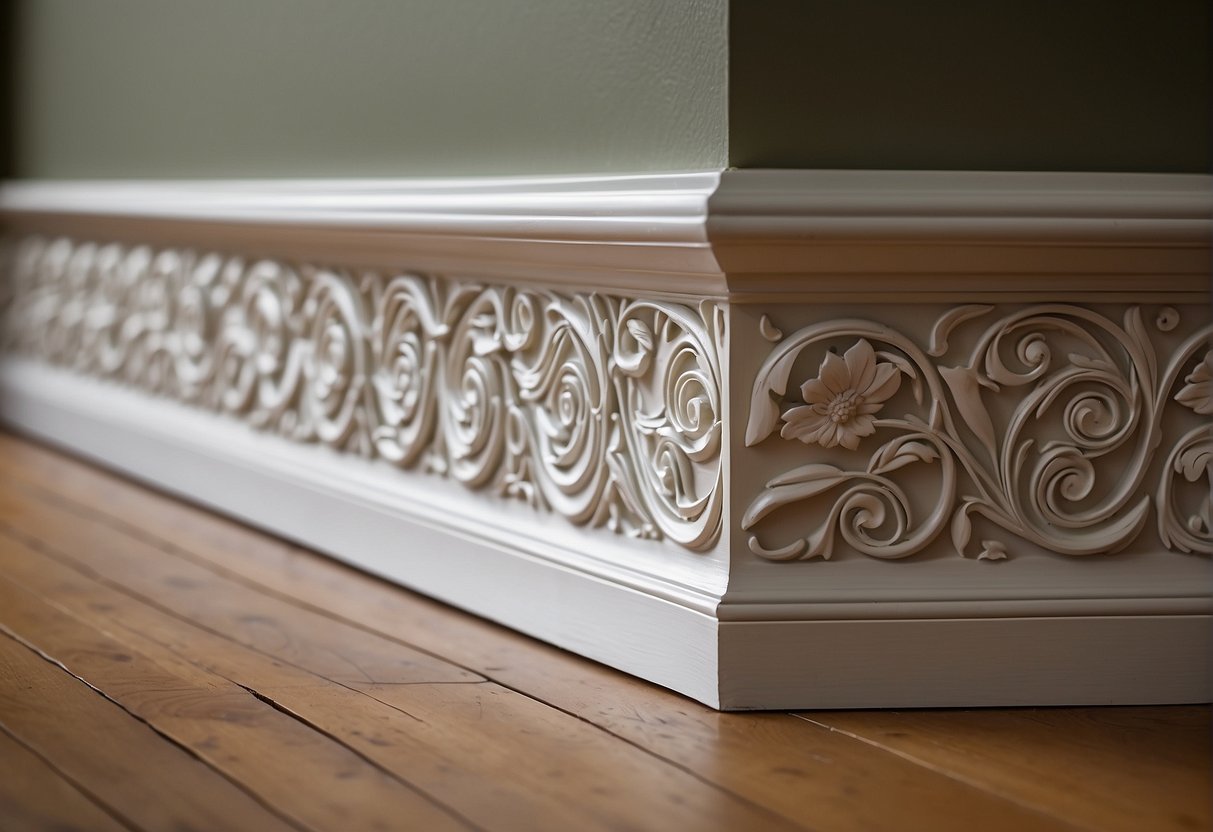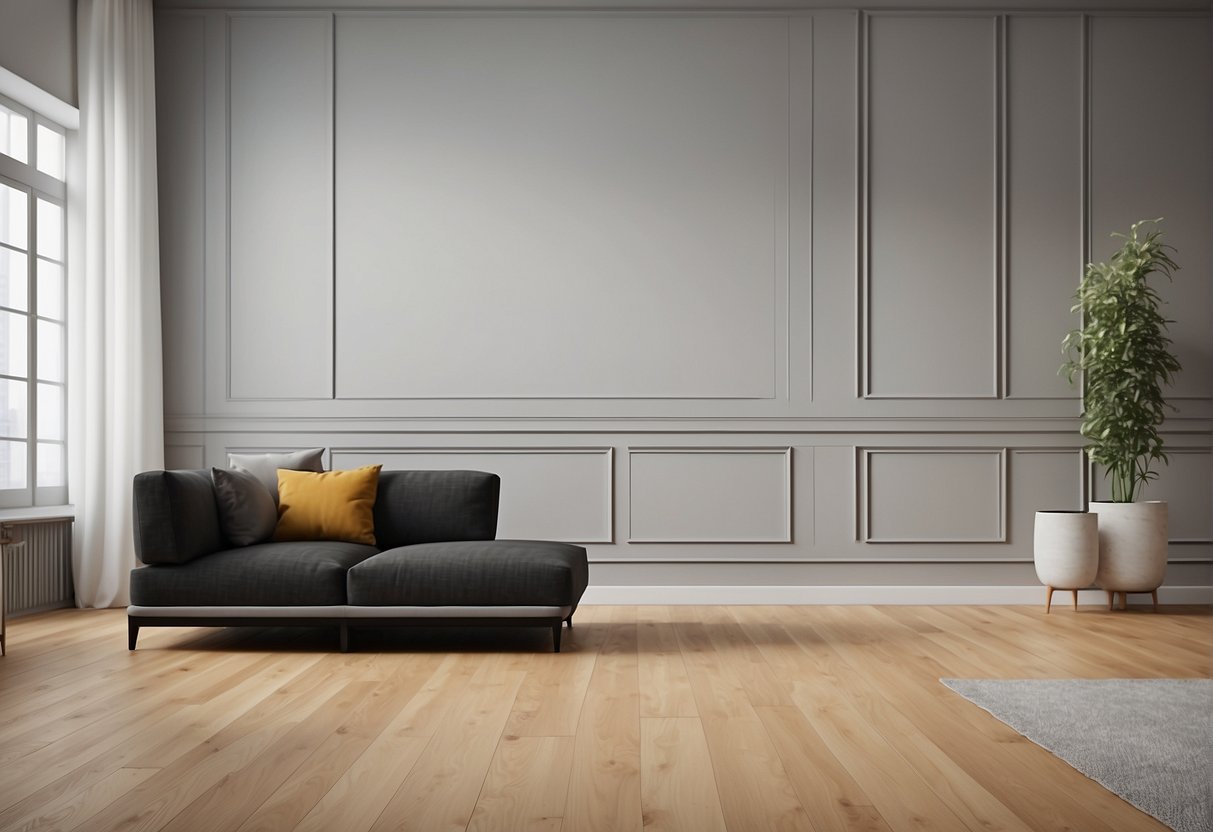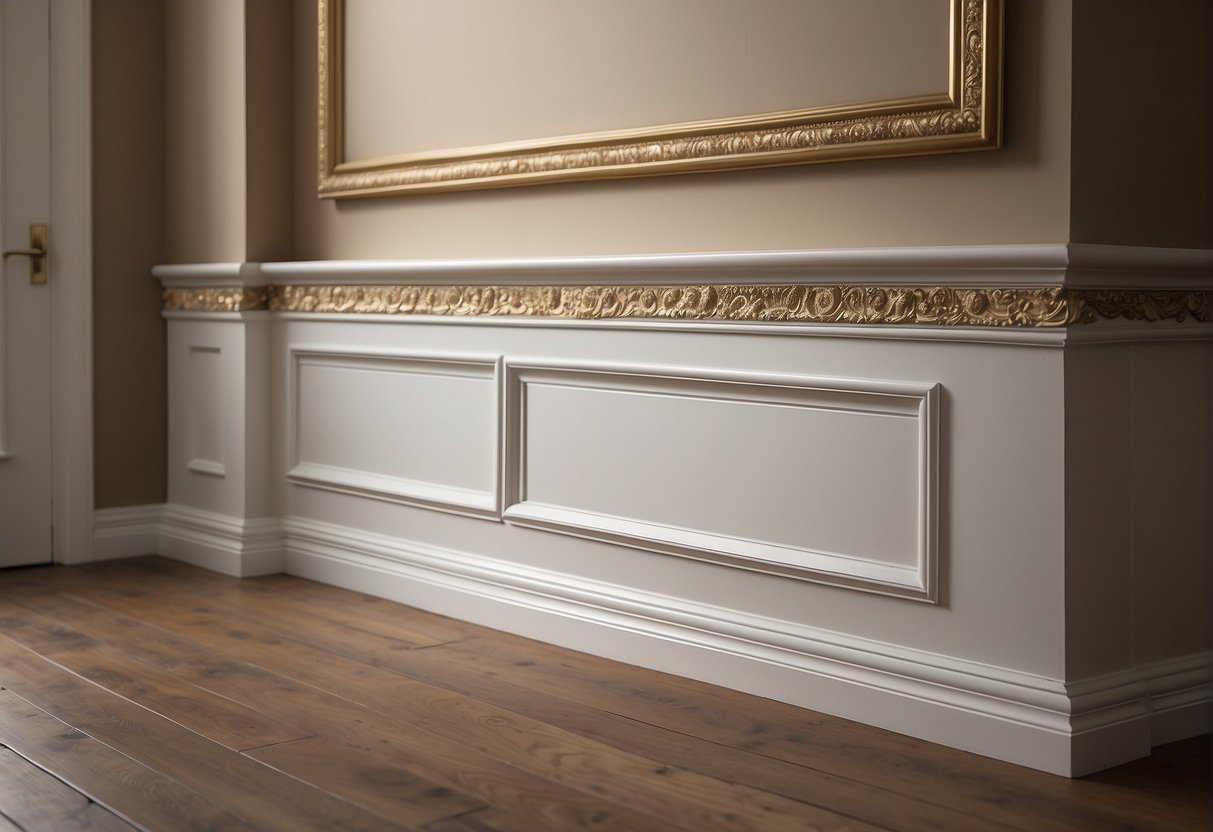Innovative Home Decor Ideas: Creativity With Skirting Boards
Skirting boards, traditionally used to conceal the joint between the wall and floor, offer more to your home's interior design than you might initially think. Far beyond their basic functionality, they have evolved into a feature that can enhance the aesthetic appeal and character of your spaces. As an integral part of home decor, skirting boards carry the potential to make a distinct design statement, contributing to the overall look and feel of a room.
Incorporating skirting boards as a design feature can transform the ambiance of your interior. Deliberate colour choices and styles can complement your home's decoration, adding depth or contrast where desired. Whether you aim for a harmonious integration with your existing wall colours or prefer a striking visual boundary, skirting boards can be tailored to achieve your design objectives. Use them to frame your spaces with sophistication or provide a subtle backdrop that enriches your furnishings and décor.
Understanding how to creatively implement skirting boards in your home can elevate your interior design game. Not merely a protective element, they provide a canvas for expressing your personal style. From classic elegance to modern minimalism, skirting boards serve as an understated yet powerful tool in defining your home's character. Navigate through these creative applications, and discover how this humble architectural element can reshape your interior landscape.
Skirting Board Design and Style

Skirting boards offer a plethora of design possibilities that can transform the look of your interiors. They not only serve a protective function but can also become focal elements with the right paint, material, and technique.
Innovative Painting Techniques
When it comes to skirting boards, you have numerous painting techniques at your disposal. Applying bold colours can turn a skirting board into an accent feature, elevating your room's style. Implementing a high-contrast paint scheme, where the skirting is painted a starkly different colour from the walls, will create a visual boundary that can alter the room's perceived proportions.
For a subtle, sophisticated appearance, consider utilising stained finishes on wooden skirting boards. This approach highlights the natural grain, adding warmth and texture to the space.
Two-Tone and Patterns
Embracing a two-tone style can bring a dynamic edge to your skirting boards. When your walls feature a lighter colour, painting the bottom half or a strip of the skirting with a darker hue can ground the space and give it depth.
You might also explore patterns such as stripes or stencilled designs. These can introduce an element of fun or elegance, depending on the pattern chosen. Patterns can be especially engaging in children's rooms or eclectic spaces where creativity is encouraged.
Materials and Textures
The material you choose for your skirting boards can significantly impact their texture and overall style. Medium-density fibreboard (MDF) is a popular choice for its smooth finish and uniformity, ideal for a contemporary look. It’s also a favourite because of its cost-effectiveness and the way it accepts paint.
Exploring different textures can add another level of visual interest to your rooms. Textured skirting in stone or embossed patterns can provide an unexpected tactile element, perfect for adding character to more traditional or rustic settings.
Utilising Skirting Boards for Functional Elegance

Concealing Wires and Cables
Skirting boards go beyond aesthetic appeal, offering ways to enhance the functionality and maintenance of your living spaces. For a clutter-free look, you have the option to utilise durable skirting designed specifically for concealing wires and cables. This approach not only maintains the elegance of your room but also safeguards the cables from wear and facilitates easy access for future maintenance.
-
Advantages:
- Protects cables from damage
- Easy maintenance access
- Keeps spaces tidy and cable-free
Enhancing Wall Panelling
Incorporating skirting boards into your wall panelling adds a refined finish and can help anchor the design of wainscoting or tiled skirting. With choices such as a shadow gap, you create a subtle yet impactful detail that complements your flooring and ties the scheme together.
-
Design Tips:
- Tile Skirting: For bathrooms, using tiled skirting boards can continue the flow from wall to floor, creating a seamless transition that is both waterproof and simple to clean.
- Wainscoting Integration: Skirting can act as a base for wainscoting, assuring that the wall protection is visually integrated with your room’s design.
Installation and Renovation Ideas

In this section, you'll explore practical ways to enhance your interior spaces using skirting boards in your renovation projects. Whether you are looking to alter the visual proportions of your rooms or create an elegant transition between surfaces, skirting boards offer a plethora of design solutions.
Height Variations and Dimension
Adjusting the height of your skirting boards can have a dramatic impact on the perception of your room's dimensions. For a room with lower ceilings, consider installing shorter skirting boards to give the illusion of a taller space. Conversely, if your ceilings are high, opting for taller skirting boards can bring a sense of balance and proportion to the room. Use a spirit level during installation to ensure your skirting is perfectly horizontal, maintaining the intended visual effect across the entirety of the wall.
- Short skirting (<10cm): Creates the illusion of higher ceilings.
- Tall skirting (>15cm): Adds a stately feel, suitable for larger rooms with high ceilings.
Creating Seamless Transitions
Renovation often involves blending new elements with the existing decor. Skirting boards can help bridge the design gap, allowing for smooth transitions between different materials such as tiles and wooden flooring, or between the floor and the walls. When renovating, select skirting material that complements both your floor and wall treatments for a cohesive look.
To create seamless transitions:
- Match your skirting board material with your floor or wall finishes
- Use paint or a stain that complements or contrasts with your walls for a deliberate design statement.
Decorative Applications and Techniques

Skirting boards can elevate the aesthetic of your living space beyond their traditional utility. Explore the potential of these elements to frame areas and incorporate decorative lighting and accents, transforming them into key features of your interior design.
Framing Features and Spaces
You can use skirting boards as a framing tool to outline distinct areas in a room or highlight features. Consider employing bold colours or contrasting mouldings to create an arresting visual frame around doorways or prominent furniture pieces. For a cohesive look, align the skirting with other decorative elements like cornices or picture rails.
- Example 1: Surround a reading nook with a painted stripe to subtly emphasise the area.
- Example 2: Install wide skirting in the same colour as window frames or doors for a unified aesthetic.
Incorporating Lighting and Accents
Adding lighting to your skirting can introduce a layer of sophistication and ambiance to your space. You have the option of embedding LED strips for indirect lighting that makes your rooms feel more spacious and modern.
- Embedding Technique: Tuck LED lights into a recess within the skirting board — ensure it reflects off the walls to create a soft, diffused light effect.
- Accent Placement: Consider strategic placement such as along the hallway to guide movement or within shelving units to highlight objects and textures.
Maximising Impact with Skirting Boards

In interior design, skirting boards offer an unexpected opportunity to enhance a room's character and style. Your choices in colour and design can transform an often-overlooked element into a feature that contributes to the room's grandeur and design inspiration.
Choosing Colours for Skirting Boards
Colour choices play a pivotal role in the impact of skirting boards. Selecting the right hue can either subtly complement your interior or make a bold statement. Here are specific ways to optimise your design with colour:
- Monochrome shades: Utilise monochrome shades for a cohesive and sophisticated look. Pair a black board with lighter walls for a striking contrast that exudes modernity.
- White skirting boards: The classic white skirting can serve to brighten and enlarge a space, offering a clean finish that pairs well with any wall colour.
When considering colour, pay attention to finishes as well. A glossy finish can reflect light and add brightness, while a matte finish might contribute to a more muted and elegant atmosphere.
Skirting Boards in Contemporary Spaces
In modern settings, skirting boards provide a unique opportunity to reinforce the room's contemporary feel:
- Straight lines and simple angles: Opt for skirting with square profiles and minimal detailing to enhance a modern aesthetic.
- Grooved skirting: Consider grooved profiles to add subtle texture and interest without overwhelming the space.
It's vital to keep the design consistent with the overall theme of your room. Contemporary spaces benefit from clean lines and minimalistic approaches, so your skirting boards should follow suit.

